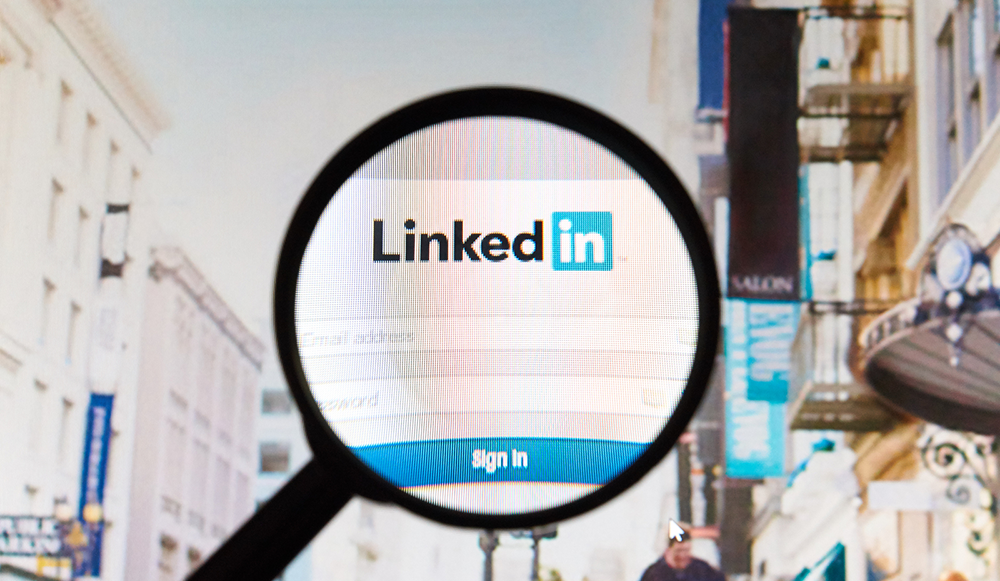New LinkedIn Solutions Expand Talent Pool for Recruiters

If you’re reading our digital magazine about human resources and recruiting and haven’t yet heard of LinkedIn, your office is probably somewhere in a deep, dark hole – and you should let us know if we need to send someone to save you.
But chances are you already know that since its inception in 2002, the social media site for professionals has become a household name and a staple for both job seekers and recruiters in the job market.
But not all job seekers can be so easily classified as such. Ninety percent of professionals are interested in hearing about opportunities even if they are already gainfully employed, according to 2016 Global Talent Trends: Data on How Candidates Want to Be Recruited, a report from LinkedIn. Three new tools from LinkedIn Talent Solutions aim to help recruiters reach candidates who fall into categories that are more complicated than “active job seeker.”
Recruiter System Connect
The first product can be of great help to recruiters and hiring managers who must juggle multiple technology solutions in their search for candidates. Recruiter System Connect (RSC) lets recruiters integrate their applicant tracking systems (ATSs) with LinkedIn Recruiter.
“RSC saves time by reducing the need to toggle between systems to access candidate details,” says Eric Owski, head of talent brand products for LinkedIn. “It makes it easier for recruiters to work together while getting the most up-to-date, accurate information. For example, recruiters using RSC can identify past applicants from their ATS within LinkedIn Recruiter search and spotlights, they can access hiring outcome details and interview feedback, and they can easily create new ATS records, all directly from Recruiter.”
Open Candidates
When an employee feels stuck or unhappy in their current position, one of the most common obstacles that prevents them from seeking employment elsewhere is the fear that their current boss will find out. LinkedIn’s second new tool, Open Candidates, is a solution that aims to make it easier for candidates to open themselves to new opportunities.
“Time constraints, not knowing what to do next, or feeling the need to upskill means people often stay put in their current job,” says Owski. “And in general, the process of finding and applying to jobs is unappealing to professionals who are pretty happy with their current job. More than 6 million jobs are available on LinkedIn right now, and even though we do a good job of surfacing the right ones for our members, the application process can be long and painful. We’ve been asking how we can give professionals more leverage – a simple, private signal that they are open to hearing from employers about new opportunities.”

“Using Open Candidates to privately signal that you’re open to new opportunities means LinkedIn can go to work for you,” Owski explains. “LinkedIn members who opt-in to Open Candidates are surfaced to LinkedIn Recruiters via a spotlight in search. However, they won’t be surfaced to recruiters from their own company or from affiliated companies. We now have more than 1 million open candidates on LinkedIn, and they’re two times more likely to respond to an InMail from a recruiter.”
Apply Starters
Partially completed applications can be a real headache for recruiters. As many as 74 percent of applications begun online are never finished, according to the 2016 Global Talent Trends report.
“Plenty of candidates start applying to jobs, but many don’t finish for any number of reasons,” says Owksi. “It could be that the candidate was applying on their phone, or there were too many questions, or they became distracted and began doing something else. It’s worthwhile to track and measure candidates’ experiences with your application process, but in the meantime, Apply Starters helps keep recruiters from losing folks who otherwise would have dropped out of the process. Candidates who started an application respond to a message from a company recruiter 93 percent of the time.”
Thirty percent of candidates use social professional networks to find a new job, 32 percent use a job board, and 39 percent are referred, according to LinkedIn’s report. LinkedIn is, in many ways, a melting pot of all of those channels. So whether you’re a recruiter struggling to build a candidate pool or a job seeker trying to find the right position, LinkedIn’s new solutions may be good ways to get started.

